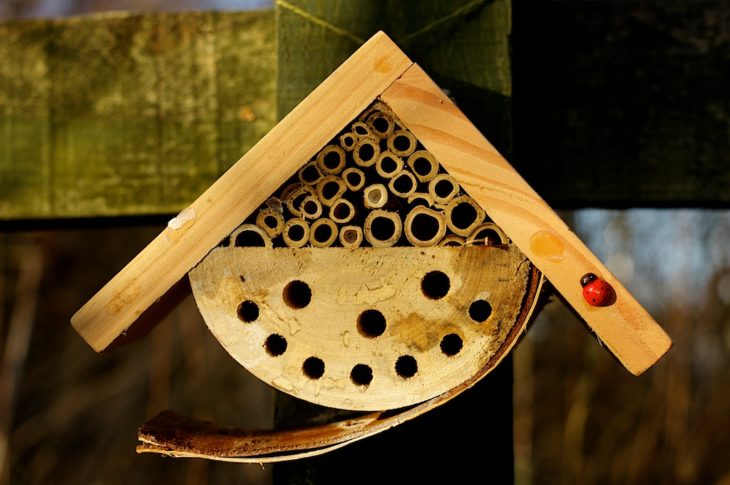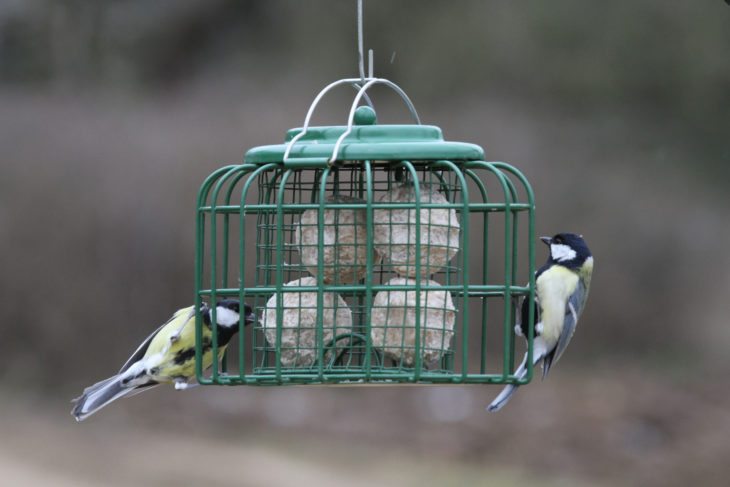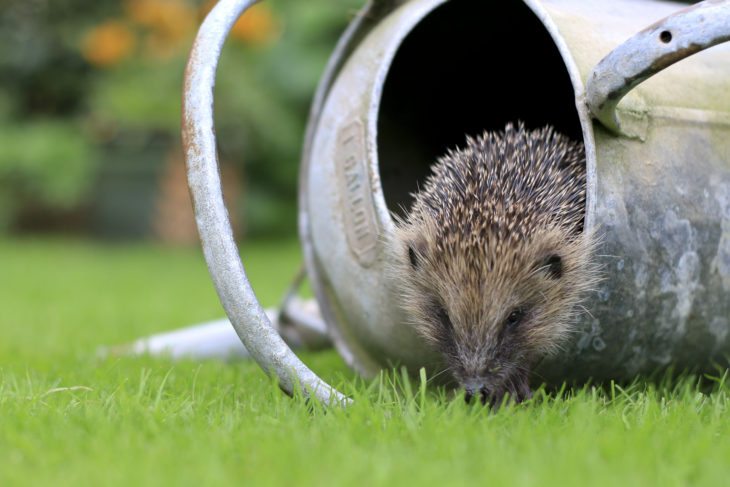Wildlife needs four things to thrive in your garden – food, water, shelter and a place to breed. By providing some – if not all – of these things you will bring your garden to life.
Click below for some ideas on how to get started and how to make a difference for wildlife, whatever the size of your garden. Alternatively, you can download our wildlife gardening leaflet for more information.
Butterfly gardens
Butterflies are attracted to nectar-rich flowers like verbena, scabious and ice-plant. Go for plants with simple flowers that make it easy for butterflies to get at the nectar. Many cottage garden flowers are suitable. Plant in a sheltered sunny spot and don’t forget to provide food plants for caterpillars, too.
Recommended: primrose, aubretia, sweet rocket, lavender, thyme and thistle
Native trees
To encourage a wide variety of wildlife to visit your garden, it is advisable to choose native trees and shrubs. Scottish wildlife has evolved with these particular species, and this makes them much more likely to survive where they are present.
Recommended: trees – alder, cherry, oak and willow; shrubs – blackthorn, broom and buckthorn
Climbing plants
Climbing plants on fences or walls make nesting and roosting sites for birds, and provide a haven for small animals and insects. Choose plants which have nectar-rich flowers followed by fruit, such as honeysuckle. Evergreens like ivy are also important.
Recommended: honeysuckle, vetch, wild rose and ivy
Hedges
Hedges provide living space and food for all sorts of wildlife, from insects to birds and small mammals. Plants that produce lots of berries – such as berberis and pyracantha – are particularly good at attracting birds to your garden.
Recommended: hawthorn, holly, hazel, elder, berberis and pyracantha
Wildflower meadows
A meadow makes a wonderful alternative to plain grass on your lawn and brings vibrant colour to your garden. Whilst it can be difficult to make a meadow from scratch, a good alternative is to plant meadow flowers as plugs in your lawn. Be careful to alter your mowing pattern to allow the flowers to grow!
Recommended: cowslip, ox-eye daisy, meadow cranesbill, yellow rattle and meadow buttercup
Feeding birds
An easy and rewarding thing to do in your garden is to put out food for birds. Bird tables and hanging feeders can give you a wonderful view of birds and can provide them with much needed nutrients, especially during bad weather. For more information and to buy a wide range of different bird foods and feeders, visit Vine House Farm’s website – the Trust benefits from every sale, so you’ll be helping wildlife in multiple ways!
You can also ensure that your garden has a mixture of native plant species, with plenty of sheltered areas for birds to seek refuge. Those that have walls and fences surrounding their garden can encourage different species of birds by using climbing plants and shrubs to provide cover and nesting sites.
Recommended: wallflower, red campion, wild privet, dog rose and holly
Building a pond
Spring is the best time to put in a new pond. Firstly, choose a sunny site away from overhanging trees. Second, ensure the hole you dig is at least 77cm deep with shallow edges. This will enable your plants to take root and allow easy access for animals. Remove any stones then line the hole with sand (and old carpet if you have it!), before laying out the butyl rubber lining. Make sure to turn the lining in at the edges and cover with turf before filling with water.
Download our guide to creating your own wildlife pond (pdf)
Recommended: white water lily, yellow flag iris, purple loosetrife and marsh marigold
Be hedgehog-friendly
Hedgehogs are one the UK’s most iconic garden mammals and there are a few things that you can do to attract them to your garden. Firstly, make sure they can access your garden by planting hedges instead of using fences, or by cutting a five inch hole in the bottom of one fence panel. Secondly, don’t be too tidy – hedgehogs and other garden wildlife like to use tall grass, dead twigs and fallen leaves as cover when they hibernate. Find out more here.
Small gardens
A small space need not be a barrier to wildlife. Small, thoughtful changes can have a real impact when attracting wild creatures. Make use of walls, roofs and other structures as well as the ground, and consider planting a window box with butterfly nectar plants. Even the smallest of ponds is valuable – old sinks and buckets can teem with life when placed away from overhanging trees.
Recommended: lavender, marjoram, tobacco plants, scabious and night-scented stocks



